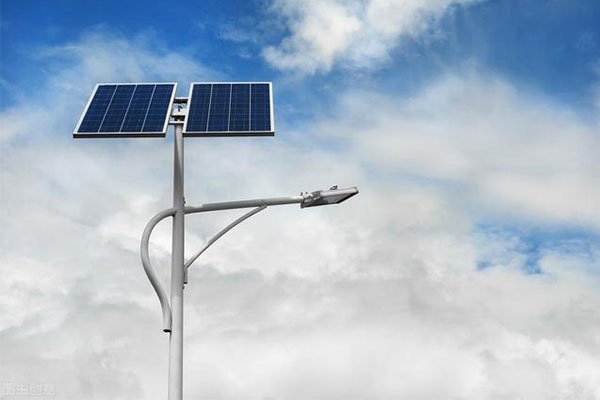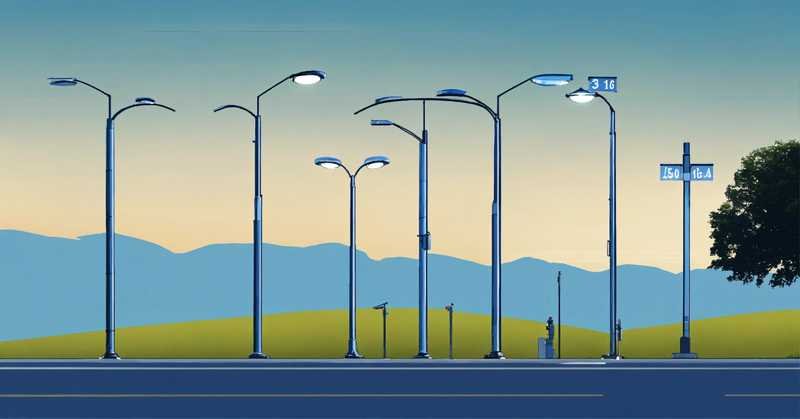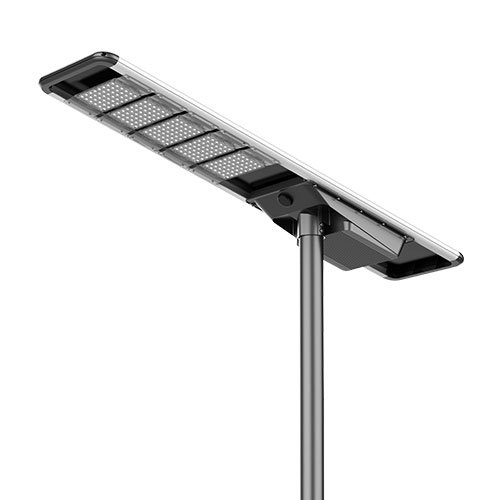Solar street lights come in a wide range of prices, from budget-friendly models to high-end smart lighting systems.
Understanding why prices vary helps buyers make informed decisions and avoid low-quality products. This guide reveals the insider factors that affect solar street light costs.
7 Key Factors That Affect Solar Street Light Prices
Solar Panel Type & Efficiency
- Monocrystalline Panels (Higher Cost) → More efficient (18%-22%), longer lifespan, better performance in low light.
- Polycrystalline Panels (Moderate Cost) → Lower efficiency (15%-18%), cheaper to produce.
- Thin-Film Panels (Lower Cost) → Less efficient, used in low-power applications.
- Higher efficiency = More expensive panels but better performance in limited sunlight.
Battery Type & Capacity
- Lithium Iron Phosphate (LiFePO4) Batteries (Expensive) → 5-7 years lifespan, high efficiency, deep discharge protection.
- Lithium-ion Batteries (Moderate Cost) → Good performance, but shorter lifespan (~3-5 years).
- Lead-Acid Batteries (Cheaper) → Short lifespan (~2-3 years), bulky, requires frequent replacement.
- Battery capacity (Ah) affects price – Higher capacity = longer lighting hours but increased cost.
LED Light Quality & Brightness
- LED Chip Brand Matters:
- Cree, Philips, Bridgelux → Higher lumen output, longer lifespan, more expensive.
- Generic LEDs → Lower brightness, reduced efficiency, shorter lifespan.
- Wattage & Lumens:
- Higher lumens per watt (lm/W) reduces power consumption and enhances brightness efficiency.
- Example: A 100W cheap LED may give low brightness, while a 50W premium LED with higher lumens will be brighter and more efficient.
Smart Control & Automation Features
- Basic Models (Cheaper) → Simple dusk-to-dawn lighting, no smart functions.
- Advanced Models (Expensive) Include:
✅ Motion sensors (adjust brightness when movement is detected).
✅ Smart controllers (adaptive dimming, remote control via apps).
✅ IoT Integration (real-time monitoring & energy optimization). - More automation = higher upfront cost, but energy savings over time.
Material & Build Quality
- Pole & Housing Materials Affect Price:
✅ Die-Cast Aluminum (Durable & rust-proof, but expensive).
✅ Stainless Steel (Corrosion-resistant, heavy-duty).
✅ Plastic/Low-Grade Metal (Cheaper, but prone to damage in extreme climates). - IP Rating for Weather Resistance:
- IP65+ (Expensive) → Waterproof & dustproof.
- Lower IP ratings (Cheaper) → Risk of damage in harsh weather.
Brand & Manufacturer Reputation
- Premium Brands (Higher Cost) → Offer warranty, reliability, and R&D investment.
- Cheap No-Brand Products → Often use low-quality materials, lack warranty, and fail prematurely.
- OEM vs. Branded:
- OEM (Original Equipment Manufacturer) → Custom-built for companies, costs vary based on order size.
- Big brands have higher prices due to better support & technology.
Installation & Maintenance Costs
- Integrated vs. Split-Type Solar Street Lights:
- Integrated Lights (Expensive initially, lower long-term costs) → All-in-one design, easy to install, minimal maintenance.
- Split-Type Lights (Cheaper upfront, higher maintenance costs) → Separate panel, battery, and LED housing; more complex wiring.
- Professional Installation Adds Costs → Some models require customized mounting & electrical setup.
Price Range of Solar Street Lights Based on Features
| Price Range | Features & Components | Best For |
|---|---|---|
| $50 - $150 | Low-wattage, polycrystalline panel, lead-acid battery, no smart controls | Small pathways, garden lighting |
| $150 - $400 | Mid-range LED, lithium-ion battery, basic motion sensor | Residential streets, small parking lots |
| $400 - $1000 | High-efficiency monocrystalline panel, LiFePO4 battery, smart dimming & IoT | Highways, urban roads, commercial areas |
| $1000+ | Premium components, AI-based controls, remote monitoring | Large-scale projects, smart cities |
How to Choose the Best Solar Street Light for Your Budget
✅ For Budget Buyers: Choose mid-range models with lithium-ion batteries and motion sensors.
✅ For Maximum Performance: Invest in LiFePO4 batteries, high-lumen LEDs, and monocrystalline panels.
✅ For Harsh Weather Conditions: Ensure IP65+ waterproof rating and corrosion-resistant materials.
✅ For Long-Term Savings: Higher initial investment in quality = lower maintenance costs over time.
Conclusion
Solar street light prices vary due to battery type, LED quality, solar panel efficiency, materials, and smart controls.
Cheaper models may seem attractive but have hidden costs (frequent battery replacements, lower efficiency).
Investing in high-quality components results in better performance, longevity, and ROI.
Always check warranty, brand reputation, and real-world reviews before purchasing.







